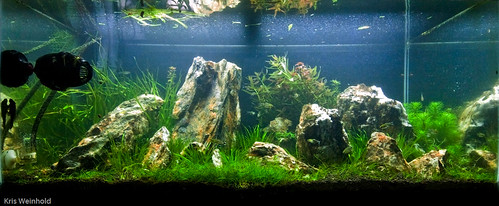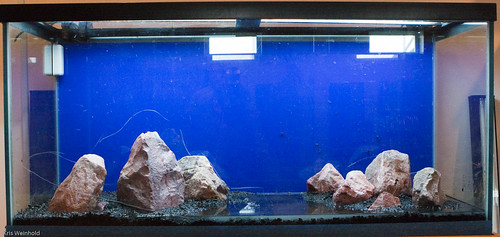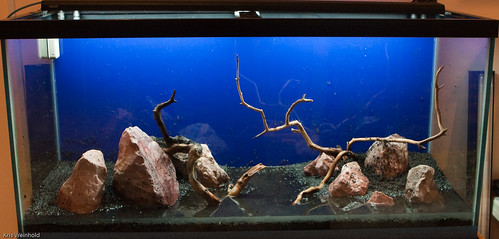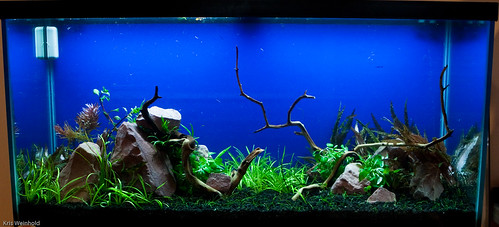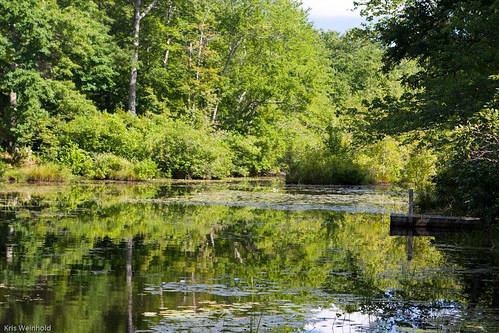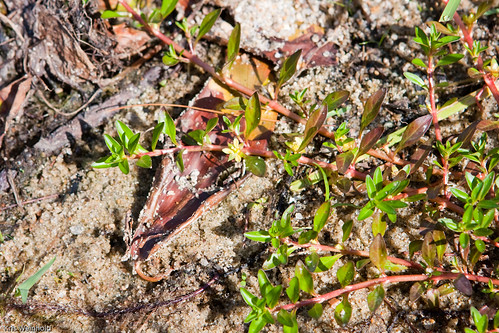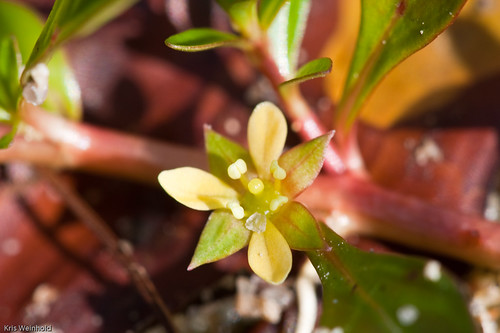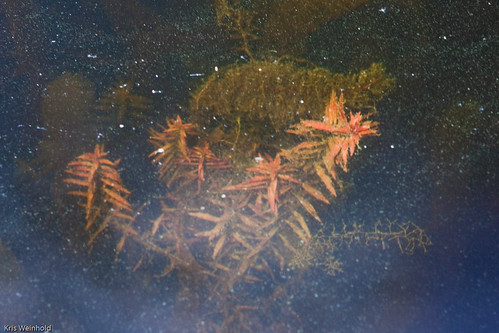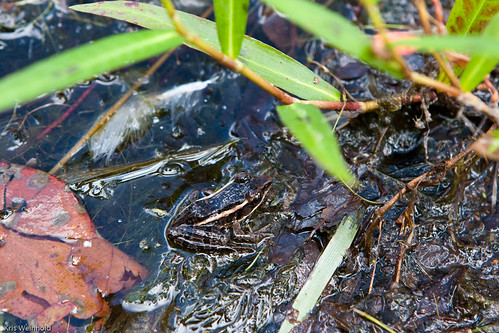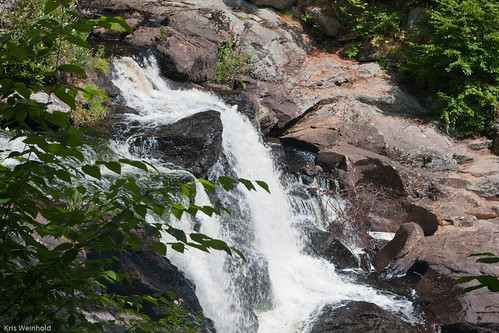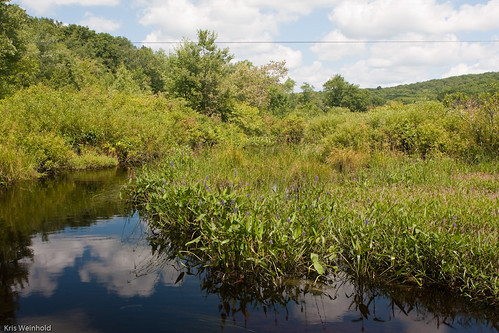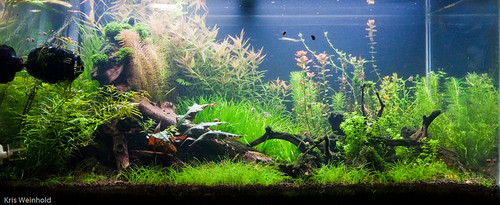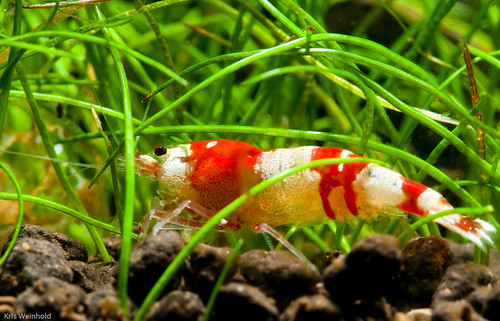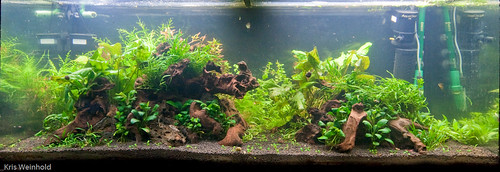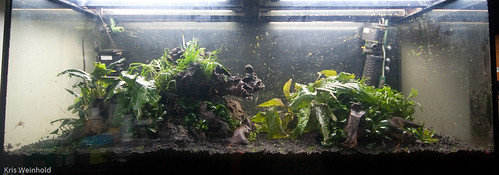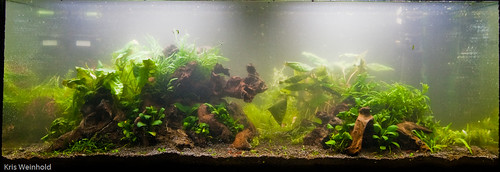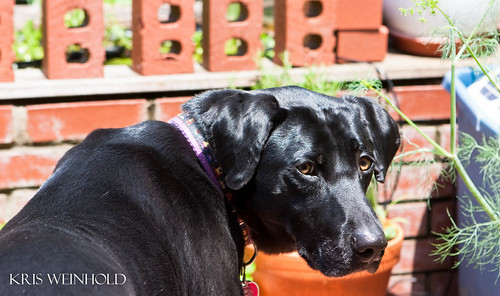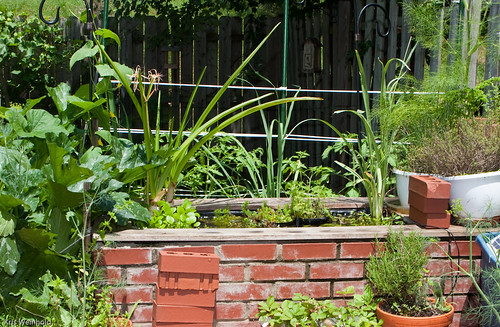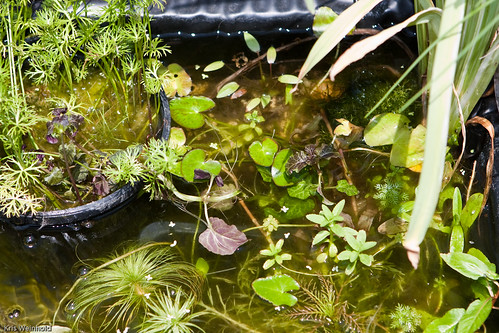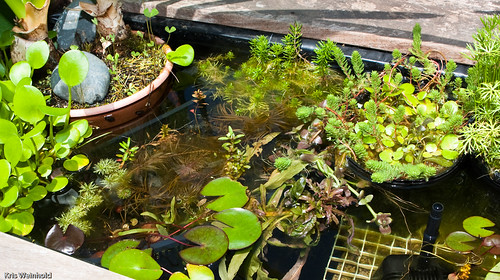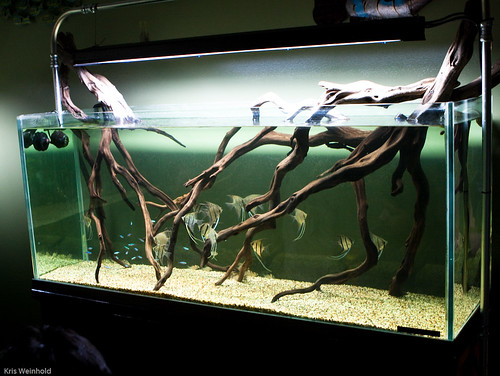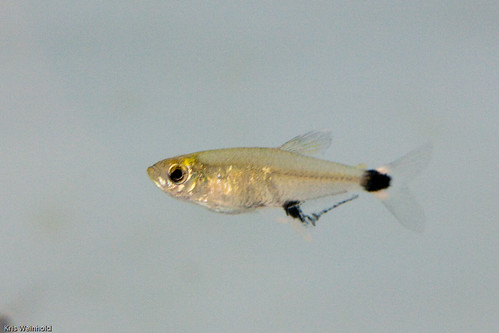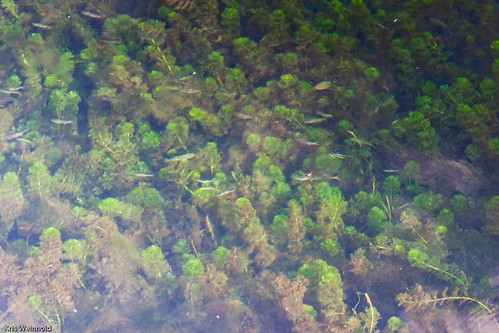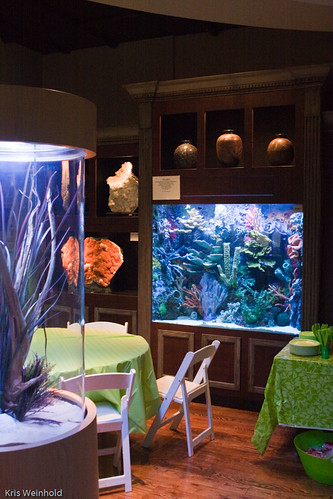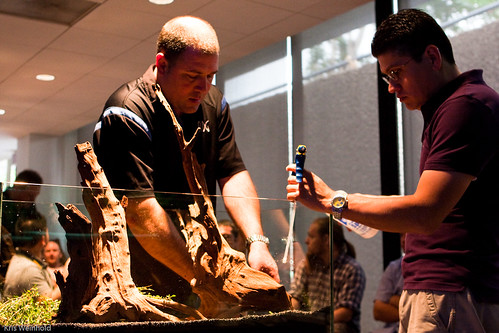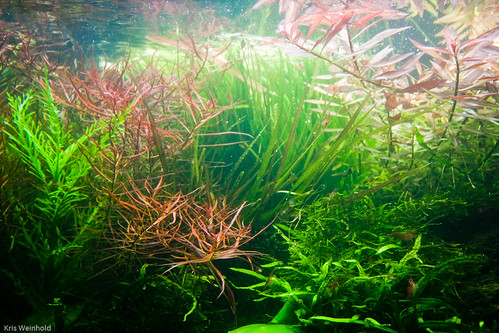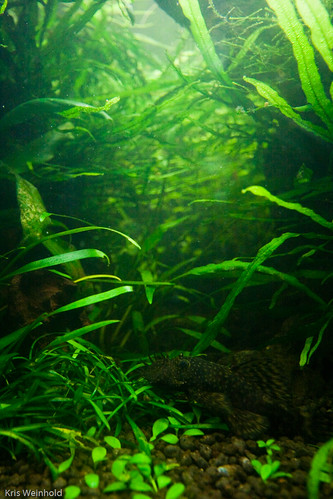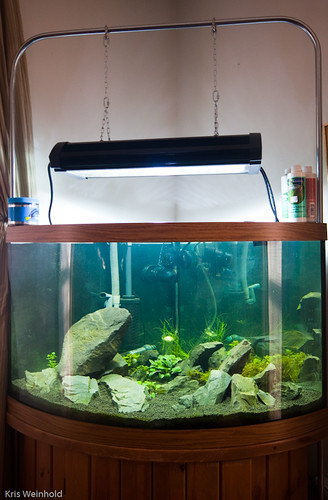Last weekend, a friend and I visited the North Tract of the Patuxent Research Refuge, a 12,841 acres area which was formerly a military training ground, and has now been returned to nature. While collecting is not permitted in this park, it was still very interesting to hike around the various bodies of water to see what aquatic plants were present.

The first lake we visited had cattails on one side of it, and lillies on the other. The cattail side also had a number of other aquatic plants present including (but not limited to) Ludwigia palustrus, Hydrilla, Callitriche sp., and some aquatic grass shown below that we’re not entirely sure what it was.
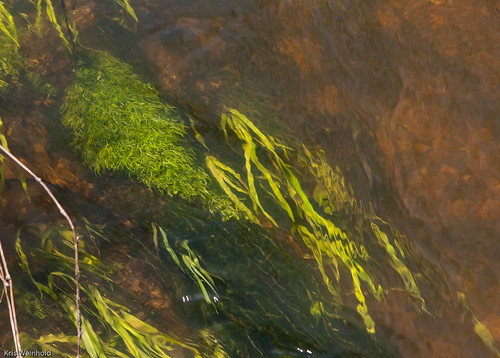
In other areas, spatterdock was present throughout. It was very interesting to see which areas had a variety of plants, and which were pretty much dominated by a single species.
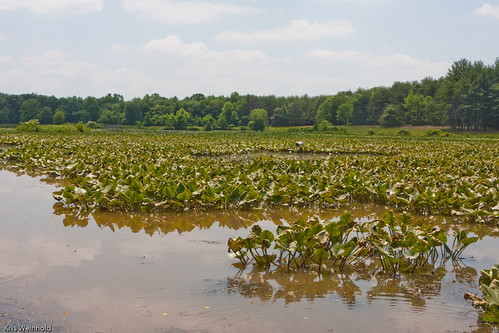
Not being limited to interesting aquatic plants, while walking along one of the roads, we came across a series of stands of Pricklypear (Opuntia humifusa) which were in full bloom, exhibiting beautiful yellow flowers. I believe this is the first time that I’ve seen this plant in Maryland, so I very much enjoyed checking it out. I guess cacti are not limited to southern hot zones!
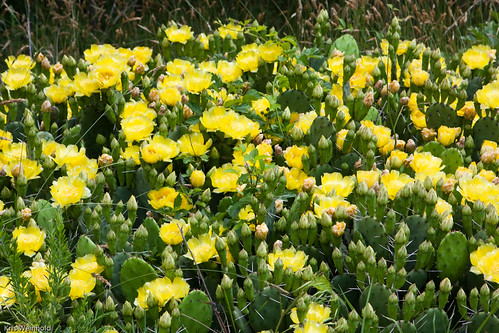
In addition to the lakes, a series of streams run through the property. Most of them are shaded, and so there’s little chance for aquatic plants to grow, but they’re beautiful nevertheless.
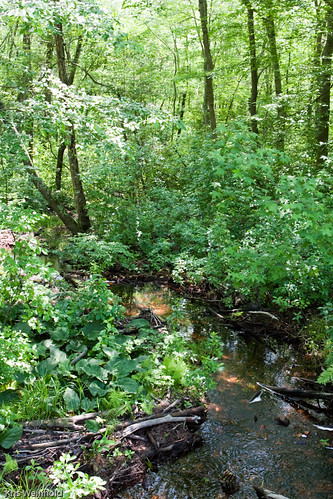
Across the street from that stream happened to be a large boggy area. We pulled over to have a look, and sure enough, we found sphagnum moss, but little else besides the grasses shown below.
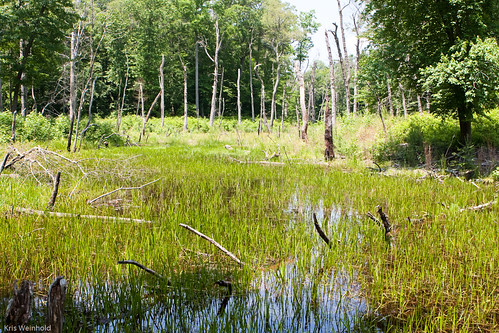
There were a few lillies there, but it seemed to mostly be a dead-zone in terms of the aquatic plants we were interested in. Throughout the course of our trip, we noticed a lot of beaver activity, evident from the saw off tree trunks, but we never did see any beavers.
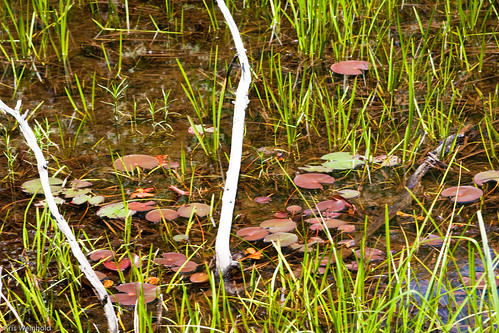
In contrast to some of the lakes, which were dominated by lillies, the marsh areas were covered in Brasenia schreberi. In amongst the Brasenia there were several other plants.

Many Utricularia flowers were present, most likely being U. geminiscapa, but that’s just our best guess. Some of the Brasenia was also flowering, showing smallish red flowers.
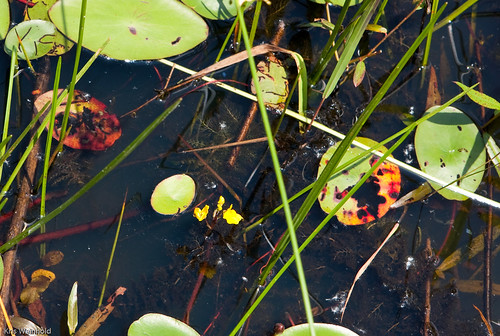
At our last stop, we found a field of Proserpinaca palustris, most of which was growing in its emersed form, even though it was submersed. This is likely due to recent rainfall that inundated the plants when the water levels rose. Further down the stems you could clearly see the fine-toothed-pinnate leaves that are so typical of Proserpinaca.
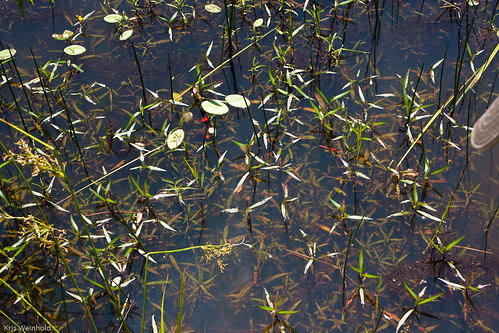
To any other folks exploring nature in this region, please be sure to use proper tick prevention, as they’re out, and Lyme is prevalent throughout the area. So, while not a collecting trip, it was a great day to be out and about exploring our native Maryland habitats.

